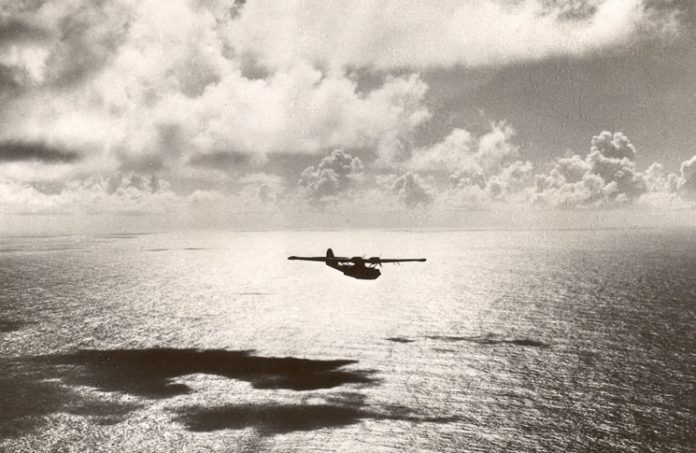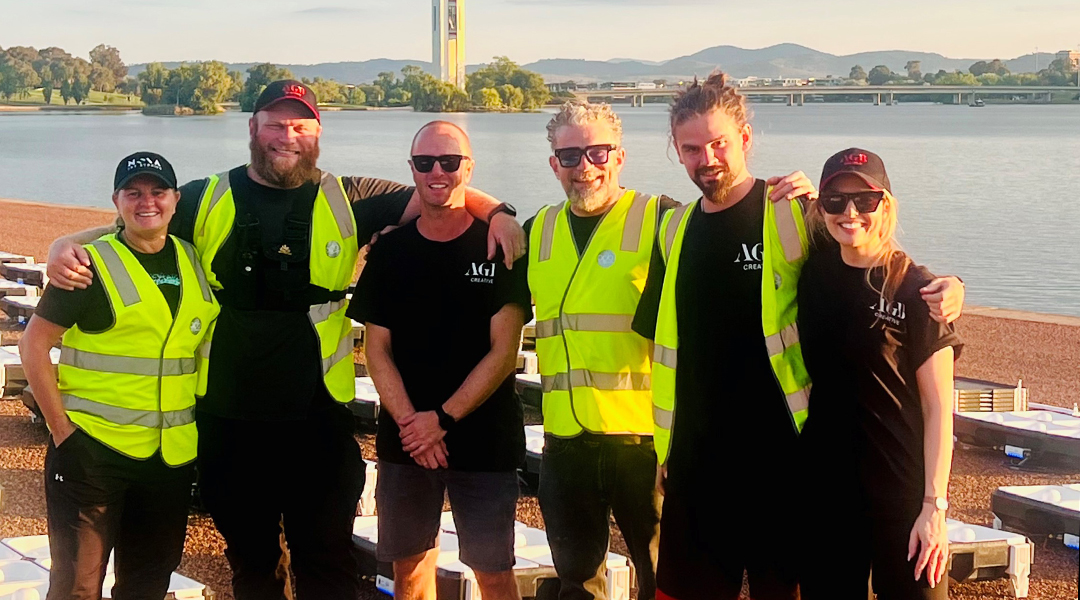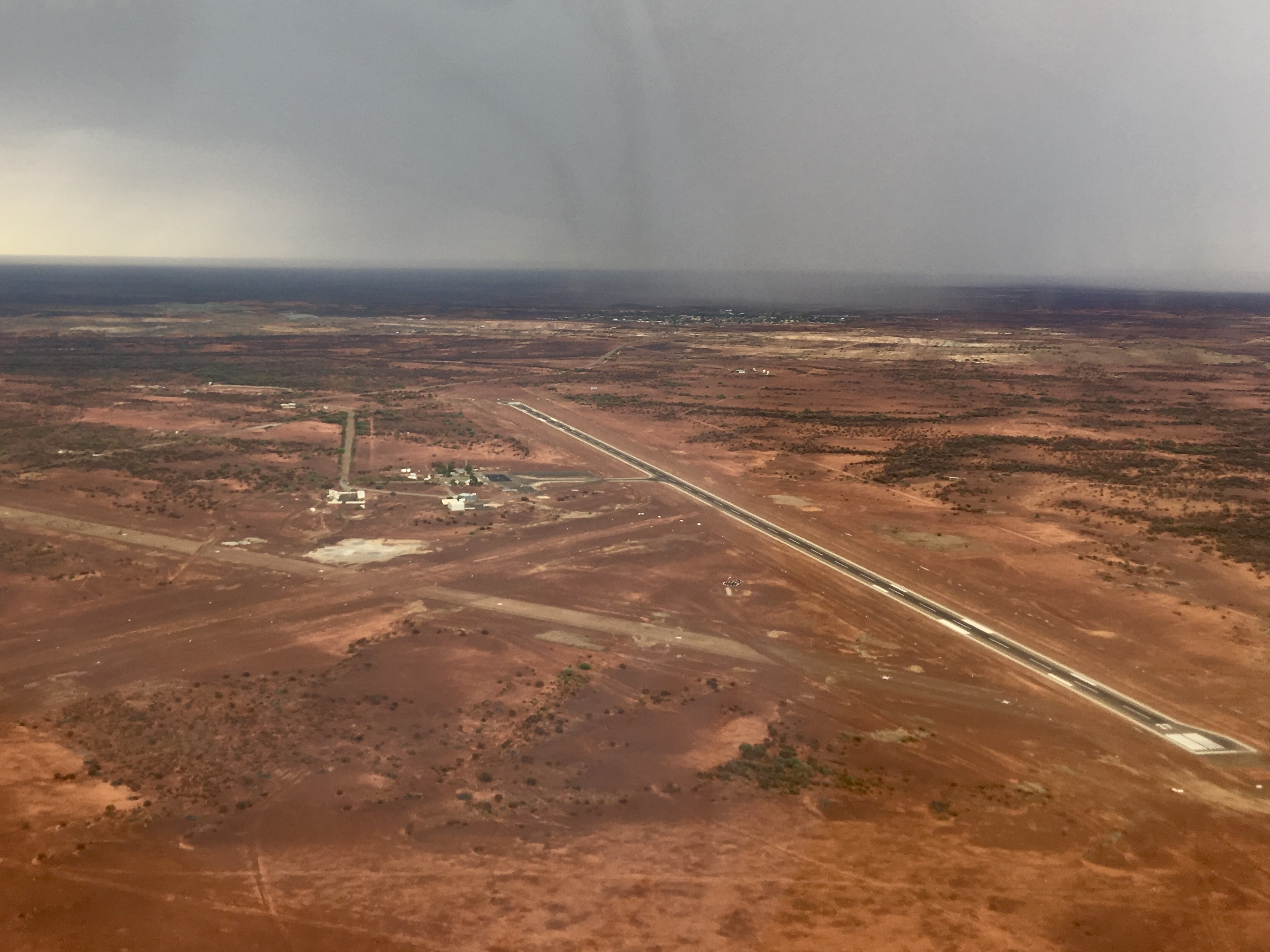Over its 100 years Qantas has acquired an enviable reputation for safe operation. It has not lost an aircraft since 1960 and not had a fatal accident since 1951. How did it build this record and what lessons can be learnt from its many fatality-free years?
From the hot plains
It began with a road trip, in a year of pandemic, an epic journey taking two twenty-something young men through the vastness of western Queensland.
In a hired Ford Model T were Paul McGinness, a demobilised Australian Flying Corps ace still infatuated by aviation, and a quieter less supremely confident personality who had flown with McGinness as his observer: Wilmot Hudson Fysh. The two were surveying landing areas for the 1919 Empire Air Race but, on the long hot drive across the endless plains (at no more than the Model T’s top speed of 70 km/h), a more ambitious idea was born—an air transport service to defeat the tyranny of distance so apparent in this part of the world.
In 1920 the two confided their plan to a local grazier, Fergus McMaster, who was both impressed and politically well connected. Within weeks they found themselves explaining their ambitions to the Federal Cabinet in Melbourne, receiving polite indifference.
By late 1920, they had an Avro 504 aeroplane on order, a wartime acquaintance with a reputation as a mechanical problem solver as their chief engineer, and a trading name. The engineer’s name was Arthur Baird and the company was called Queensland and Northern Territory Aerial Services—Qantas.
Tom Harwood, curator of the Qantas Founders Museum in Longreach, Queensland—where the fledgling company opened its first base in 1921— says it’s important not to deify Fysh, McGinness and Baird, but to recognise the power of the legend they created.
‘By modern standards the early days of Qantas were hair-raisingly dangerous and what we would now call aviation incidents were almost a weekly occurrence,’ Harwood says.
McGinness was the spark of the operation, but he soon lost interest and moved on to other ventures more exciting than regular trips over the featureless plains of western Queensland.
‘He was a fantastic wartime pilot but he was bored by peacetime flying,’ Harwood says. ‘There was no excitement, no aerobatics, no fun. Fysh was a follower rather than a leader, but he appreciated from an early stage the value of safety in marketing an airline.’
Aviation was regarded as an inherently hazardous activity in the early 1920s, Harwood says. ‘He [Fysh] was conscious from the start that their business was regarded as dangerous madness, and that the best way to expand it was to defy the doubters by being safe.’
In 1922 Fysh wrote, ‘The first aim of this company is absolute reliability of machines and safety to passengers. It is only on those conditions that commercial aviation can be built.’
The first aim of this company is absolute reliability of machines and safety to passengers.
The fledgling Qantas also received government and industry support. The Controller of Civil Aviation Horace Brinsmead made it part of his job to spread safety information and arranged for Qantas to benefit from the hard-won knowledge of other pioneers.
‘Western Australian Airways had a lot of procedures going and Brinsmead asked [WAA founder] Norman Brearley to send this information—forecasting, planning, standards—to Qantas. To their credit, Qantas took this seriously and adopted the procedures,’ Harwood says.
‘It’s Brinsmead and the government who want this thing to survive, so they make it happen. Nobody had run an airline before and everybody was learning the game, including the government. It was a continuous process of learning but they acknowledged mistakes and learnt lessons so the same thing would not happen again. That attitude was the foundation of aviation safety.’
Author and former Qantas executive Jim Eames says signs of Fysh’s increasingly stringent commitment to what would now be called safety culture were evident by the 1930s.
He tells the story of a Qantas pilot, Bill Crowther, who encountered reduced visibility at altitude from an outback dust storm and made the decision to turn back. This threw the airline’s schedule into chaos and, when Crowther was summoned to the airline’s board in Brisbane, he feared a reprimand or the sack. But, to Crowther’s astonishment and delight, Fysh greeted him with great warmth and told the Qantas board, ‘This is exactly the sort of pilot we need.’
A renowned 1930s pilot, C.W.A. Scott, who was to win the London-Melbourne MacRobertson Air Race in 1934, fell foul of the Qantas standard. In 1928, he crashed after taking off in poor visibility, killing an engineer. Scott’s ability was not in doubt, but Fysh wanted him sacked. Board member McMaster weighed the decision, telling Scott, ‘The fact remains that you were a pilot employed in commercial aviation and you did not put safety first. You took a risk that you should not have taken.’ However, Scott kept his job after an appeal to the board; Fysh’s response was to issue Rules for the observance of pilots, marking the beginning of Qantas’s strong tradition of standard operating procedures (SOPs).
SOPs became increasingly important as the airline introduced multi‑crewed aircraft, Eames says. He remembers arranging a flight deck visit in the 1970s for a journalist who was astonished how a crew of three strangers interacted in an intimate, almost scripted fashion. ‘We don’t have to know each other to fly together because we have something called “the book”,’ the captain told the journalist.
During the 1930s Qantas’s safety culture matured, with the input of Lester Brain, chief pilot and first company employee not to be a veteran of the Great War. Between 1934 and 1940, Qantas Empire Airways (a joint venture with Britain’s Imperial Airways) flew more than 10 million kilometres without any injury to passengers or crew. Over the same period, Imperial Airways, admittedly a larger airline, had seven crashes that killed 30 people.
And after the initial chaos of World War II, in which two Qantas aircraft were shot down, the airline began an ambitious operation that would lay the foundations for long, safe overwater flights in peacetime. The double sunrise flights were long distance, even by modern standards, flying non-stop from Perth to Sri Lanka and taking up to 32 hours in a twin‑engine Catalina flying boat. Among the hazards were engine failure, fatigue, tropical weather and the fighter aircraft of the Imperial Japanese Navy. The service concluded after 271 crossings and 648 passengers carried, two or three per flight—just under 1.6 million kilometres flown, and no deaths or aircraft lost.
All the while, Fysh sought continuous improvement. A letter from him in the late 1930s recommends, ‘The standard American practice which insists that passengers must have their safety belts on whilst landing or taking off.’
Something in the air? Culture and safety
Graham Braithwaite, Professor of Safety and Accident Investigation at Cranfield University, began his academic career in Australia and was much impressed by the openness, self-reflection and quest for continuous improvement he saw in Australian air transport. But one of his greatest insights into Australia came in the corridors of another university after he returned as a PhD student to the United Kingdom. ‘I met the head of department who asked about my trip. With great enthusiasm I said “Jim, it was fantastic—everyone was so open and helpful. I learned loads!” He nodded and listened, but at the end said, “My name isn’t Jim, it is Professor … you’re back in England now”.
‘You have this wonderful open, direct, but not hierarchical way of communicating,’ Braithwaite says of Australians. And this openness has direct implications for aviation safety. ‘You say it as it is, and you don’t have accidents where the first officer knows there’s a problem, but the captain is god and can’t be questioned. We Brits are quite similar to Australians in many regards, but in airline safety culture surveys, our pilots are more likely to say they’d go to the union rather than report directly.’
Qantas’s reputation for wide-ranging and closely followed SOPs reflects another aspect of Australian society, although one less celebrated and romanticised. Australia is a pragmatic and compliant culture, the first in the world, for example, to legislate for seatbelts in cars, random breath testing and speed cameras.
These two cultures have combined, fortuitously, Braithwaite says.
‘You have this combination of open culture and adherence to SOPs that reflects Australia by and large. Culturally, this puts Qantas in a sweet spot, where both of these apply to it. There’s a strong procedural culture but people don’t follow SOPs blindly.’ He cites the engine failure of Qantas flight 32 in 2010 as an example, noting there were no standard operating procedures for the unprecedented situation the crew encountered.
Eames remembers observing incidents in Qantas flight simulators in the 1970s and ’80s where senior captains made mistakes but acknowledged them in the presence of junior first officers. ‘That minor cultural characteristic has major safety implications,’ he says. ‘It sends the messages that anyone can make a mistake, that mistakes should be acknowledged and that anyone can call out a mistake.’
Braithwaite says the culture of openness is not just on the flight deck in Australian aviation. ‘It’s also in engineering, a willingness to say, “this procedure’s no good”,’ he says.
Referring to Qantas’s original engineer, the problem-solver Arthur Baird, Harwood says image has come to be as important as reality. ‘The name and legend of Arthur Baird carries through to today’, he says.
‘Whether his standards were as high as people believe, I don’t know, but the point is his name inspires a high standard in the modern era. Qantas engineers come here on a pilgrimage, and respectfully say the standard they aspire to is the Arthur Baird standard. The idea of Arthur Baird, as much as the reality of Arthur Baird, keeps the standard high. Even if it is an illusion, nobody loses.’
Very good luck
Since 1951 Qantas has had at least seven incidents and accidents which could have resulted in fatalities, but did not:
- In 1960 a Lockheed Super Constellation had a runway excursion on take-off at Mauritius after a failure of one of its complex Wright R-3350 turbo-compound engines. The aircraft was destroyed in a post-crash fire but all passengers and crew evacuated.
- In 1966 a Boeing 707 was rocked by severe vibration immediately after take-off from Sydney. In the 10 minutes before the aircraft landed, it reached 287 knots and recorded 2 G momentarily. The investigation found loose bolts in the tailplane area.
- In 1969 a Qantas Boeing 707 departed level flight and went into a spiral dive after the captain corrected a steep but non-existent bank shown on a faulty attitude indicator. Over 40 seconds, the aircraft lost 19,000 feet, reached an indicated Mach number of 0.93 and recorded up to 4.57 G.
- In 1999 Qantas flight 1, a Boeing 747-400, had a runway excursion on landing at Bangkok after standard operating procedures broke down during a windy touchdown on a wet runway.
- In 2008 an oxygen cylinder exploded on Qantas flight 30, a Boeing 747-400, for reasons the Australian Transport Safety Bureau’s investigation was unable to discover. Fragments penetrated the passenger cabin at high speed but no passengers were injured. A large hole was blown out of the fuselage.
- In 2008 Qantas flight 72, an Airbus A330-303, made an emergency landing at Learmonth Airport following an inflight incident that included two sudden, uncommanded pitch-down manoeuvres that caused severe injuries to several passengers and crew.
- In 2010 Qantas flight 32, an Airbus A380, had an uncontained engine failure but landed safely despite being overweight, having many systems disabled and saturating the flight crew with a seemingly unending series of electronically generated checklist items.
Lucky, smart, or both?
Braithwaite says many of the so-called reasons for Qantas’s impressive record do not withstand examination. ‘There are a whole bunch of myths that people trot out, particularly from a European perspective,’ he says.
‘The weather’s much better down there—that’s one myth. But the weather’s great in Australia until it’s not great—then it’s not great to an extreme. Having lived in Sydney and seen hailstones the size of cricket balls, I know Australia can have extreme weather.
‘Another [myth] is, “There are not many big hills in Australia.” Well, sort of, but when you look at the kinds of accidents involving controlled flight into terrain, it’s not solely about the height of the hill.’
When Qantas was solely a long-haul carrier, detractors would argue it had reduced exposure to take-offs and landings, the most dangerous phases of flight. But long-haul crews have less exposure to take-offs and landings in proportion to their hours and are therefore less experienced. Successful long-haul operators recognise this safety gap and close it with SOPs and training, Braithwaite says.
He concedes that Qantas is a medium-sized airline by world standards. This affects its exposure to overall risk. But he believes when analysed over decades, culture is the best explainer of success.
But he believes when analysed over decades, culture is the best explainer of success.
‘The real answer is there’s a culture here’, Braithwaite says. ‘It started on the basis of several key personalities. As aviation came to Australia, it offered something quite different to everywhere else in the world. What was thrilling entertainment here, over there was a transport innovation of enormous potential. But it needed reliability. If your engine fails over rural Kent you can land and catch the train. If it fails over outback Queensland, you write your last testament on the fuselage before you die of thirst. That pushed engineering reliability, navigation and weather consciousness.’
Harwood says the 1966 incident, involving severe vibration immediately after take-off, reveals Qantas crews were practising crew resource management before the concept had a name. ‘The pilot told his son he could not have landed without the support of the two other flight crew,’ Harwood says.
2020: back to the hot plains
The similarities after 100 years are striking, if grim, with disease again sweeping the world and Qantas once again a domestic airline—temporarily this time. But Harwood says something else has carried through: the airline’s maintenance, operational and management cultures. ‘The world in which Qantas operates today is totally different from the world of the original Q.A.N.T.A.S.’, he says. ‘And yet Qantas operates successfully in this modern world. It comes down to who maintains the aircraft, who flies the aircraft and does the management say, “This is the way it’s got to be”? In that sense, nothing has changed.’










The record stands and as it is history nothing can change it. That said any serious student of Human Factors and aircraft accidents knows that a clean record is only a small part of the picture.
One bad incident does not make mark an operator as unsafe anymore than no accident means 100% safe. Read Professor James Reason’s comments on this subject.
There ius always much to learn from records such as Qantas has achieved and we should look and learn though always with a critical mind. Safety grows froma culture of questioning everything constantly..
In the dynamic environment of aviation it is the only way.
As with the Finance industry, “past performance is not a reliable indicator of future performance”. However, Qantas are ahead of the game with their strong safety culture, and are well-placed to maintain their impressive safety record.
Eric, Well said. A safety record is only true up to the last flight safely conducted. While many believe they have a sound safety culture working within their business this thinking must be constantly challenged to ensure this remains the truth. Too may airline CEO’s and their supporters have loudly claimed to put safety as their first priority when insiders with knowledge see an entirely different picture. Aviation like the sea is terribly unforgiving, especially with complacency.
[…] Source: https://www.flightsafetyaustralia.com/2020/11/qantas-the-safety-story/ […]